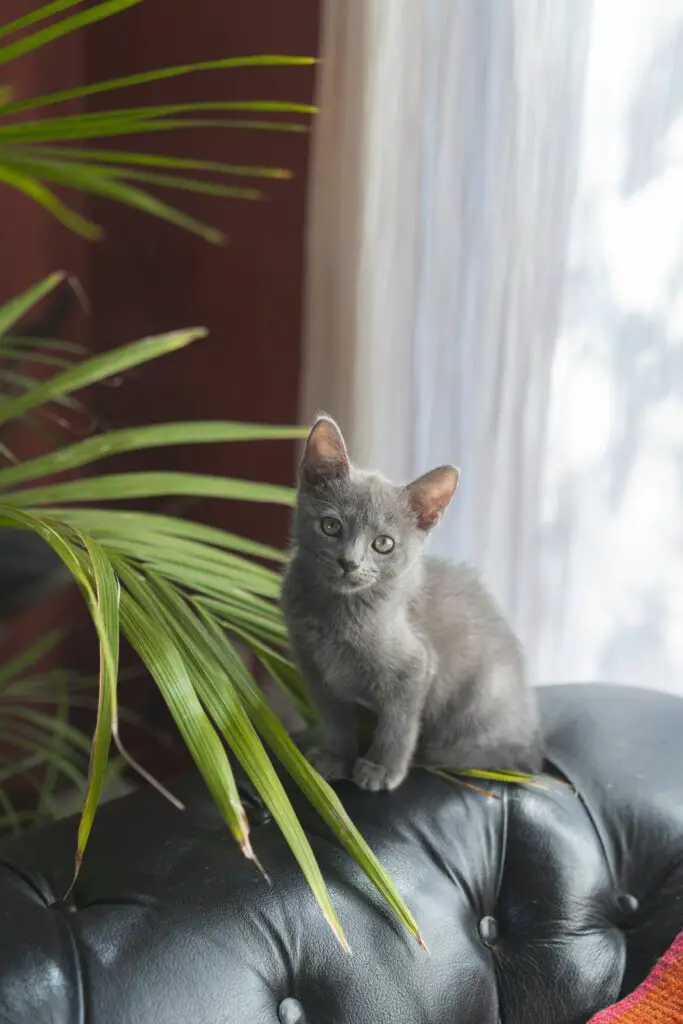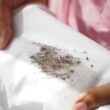Table of Contents Show
Over the years, as both a homeowner and a contractor, I’ve been involved in countless house projects and have had the privilege of meeting a diverse range of clients, many of whom are proud cat owners like myself.
One question that seems to pop up consistently, especially when we discuss living room revamps, is, “Will a cat scratch a leather sofa?”
It’s a valid concern. After all, leather sofas aren’t just furniture – they’re often central pieces in our homes, representing a significant investment and setting the tone for the rest of the room.
At the same time, we adore our whiskered companions and want them to feel at home, too. So, where’s the balance? How do we ensure the longevity of our prized leather sofa while keeping our cats happy? Let’s embark on this comprehensive journey together to find out.
Quick Answer
Yes, cats can scratch leather sofas. While leather is durable, its texture can appeal to feline instincts, leading to scratches. Maintaining a leather sofa in a cat-inhabited home requires understanding cat behavior and applying preventive measures.
Leather Sofas and Cats: A Love-Hate Relationship?

Leather furniture, with its sleek appearance and luxurious feel, is a sought-after choice for many homeowners. However, for our feline companions, this material might as well have a neon sign flashing “Scratch Me!” So, what exactly makes leather such an irresistible target for cats?
The Appeal of Leather to Cats: Texture and Sound
Cats are sensory creatures. The tactile sensation they get from scratching is not just about nail maintenance; it’s also a sensory experience. Leather, being a natural material, has a unique texture that offers a certain resistance when scratched, providing satisfying feedback for cats.
Additionally, the sound produced when a cat’s claws make contact with leather can be enticing. It’s a combination of these sensory cues that can make leather sofas particularly attractive to our feline friends.
Comparing Leather to Other Furniture Materials in Terms of Scratch Resistance
When we juxtapose leather with other furniture materials like fabric or suede, it’s clear that leather does stand out in terms of durability. Fabric sofas, for instance, can fray easily when subjected to cat claws, while suede might show marks more prominently. Leather, on the other hand, tends to resist punctures to some degree, but it’s not immune to surface scratches.
According to a study published in Penn Today Journal based on Feline Behavior Studies, cats have a slight preference for scratching leather over certain other materials. The researchers hypothesized that this preference is linked to the sensory feedback cats receive from leather, as well as its resemblance to natural surfaces they’d scratch in the wild.
This underscores the importance of understanding the intrinsic behavior of cats and how it interacts with our choice of home furnishings.
In essence, while leather might have a few points in its favor when it comes to resisting damage, it’s by no means a cat-proof material. Awareness and preventive measures are the keys to harmonizing our love for leather furniture with our adoration for cats.
Factors Influencing a Cat’s Urge to Scratch Leather
Understanding what entices a cat to lay its claws on your leather sofa requires a deeper dive into both the characteristics of the material and the nature of our feline companions. Various elements come into play when it comes to this feline behavior.
Type and Quality of Leather
Different kinds of leather vary not only in appearance and feel but also in their allure to cats.
Full-Grain Leather
This is leather in its most natural form, with the surface grain intact. It’s durable and develops a rich patina over time. Because of its coarse texture, full-grain leather might be especially appealing to cats seeking a satisfying scratching experience.
Top-Grain Leather
Slightly more refined than full-grain, top-grain leather has had the very top layer sanded to remove imperfections. It’s smoother, and while it may be less enticing than full-grain, it’s still susceptible to cat scratches.
Bonded Leather
This is a product made from leather scraps that are bonded together and then coated with a layer of polyurethane. Its surface is the least natural compared to the aforementioned types. Cats may or may not be drawn to it as much, but when they do scratch, the damage can be more pronounced due to the synthetic layer.
The Age and Activity Level of the Cat
Kittens and younger cats are generally more active and curious, making them more likely to explore (and scratch) various surfaces, including leather. An older, more sedentary cat might be less inclined to scratch furniture, but this can also vary based on individual temperament and health.
Previous Experiences with Leather
Past interactions can shape a cat’s behavior. If a feline has previously encountered leather furniture in a positive context—say, it was a cozy spot where they napped or received affection—they might associate the material with comfort and be less inclined to scratch.
Conversely, if their first interaction involved scratching, and they found it enjoyable, they might be more likely to repeat the behavior.
In conclusion, a combination of material factors and feline individuality determines whether your leather sofa will face the wrath of those sharp little claws. Being aware of these influences can guide homeowners in making informed choices and setting preventive measures.
Repairing and Masking Scratches

Even with the most cautious measures, it’s almost inevitable that a leather sofa might succumb to a few scratches, especially in a home shared with cats. The silver lining is that leather, with its resilient nature, offers avenues for repair and restoration. Here’s a guide to mending those marks and ensuring your sofa remains a statement piece in your living space.
DIY Solutions for Minor Scratches
- Olive Oil and Vinegar: A mixture of equal parts olive oil and vinegar can be applied to minor scratches. Gently rub the solution into the scratch with a soft cloth, allowing it to absorb, and then buff off the excess.
- Baby Wipes: Surprisingly, these gentle wipes can sometimes buff out minor scratches on leather. Always test on a hidden area first.
- Shoe Polish: A matching-colored shoe polish can be carefully applied to mask superficial scratches. It’s essential to ensure the polish color matches the leather to avoid further discoloration.
Professional Repair Options for Deeper Gouges
For scratches that penetrate deeper into the leather or cause more significant surface damage:
- Leather Fillers: These are specialized products designed to fill deeper scratches and gouges in leather. Once applied and dried, they can be sanded smooth and then colored to match the surrounding leather.
- Professional Leather Repair Kits: Available at many specialty stores, these kits come with a range of tools and products designed to mend more severe damage, including compounds, dyes, and texturing agents to restore the leather’s original look.
- Hiring an Expert: For particularly treasured or expensive pieces, it might be worth considering bringing in a leather repair specialist. They’ll have the expertise and tools to restore your sofa to its former glory.
Products Available in the Market for Scratch Concealment
- Leather Conditioners and Creams: These products not only nourish and protect the leather but can also help in camouflaging minor scratches.
- Leather Dyes and Paints: These are designed to color and conceal larger areas of damage. It’s crucial to select a product that matches your sofa’s shade.
- Protective Sprays: Once repaired, using a leather protective spray can provide an added layer of defense against future scratches, ensuring the material remains smooth and pristine.
In the end, while scratches might seem like a blemish on your beloved leather sofa, they don’t signal the end of its aesthetic appeal. With the right tools and techniques, you can restore its sheen and continue to enjoy its comfort and elegance.













